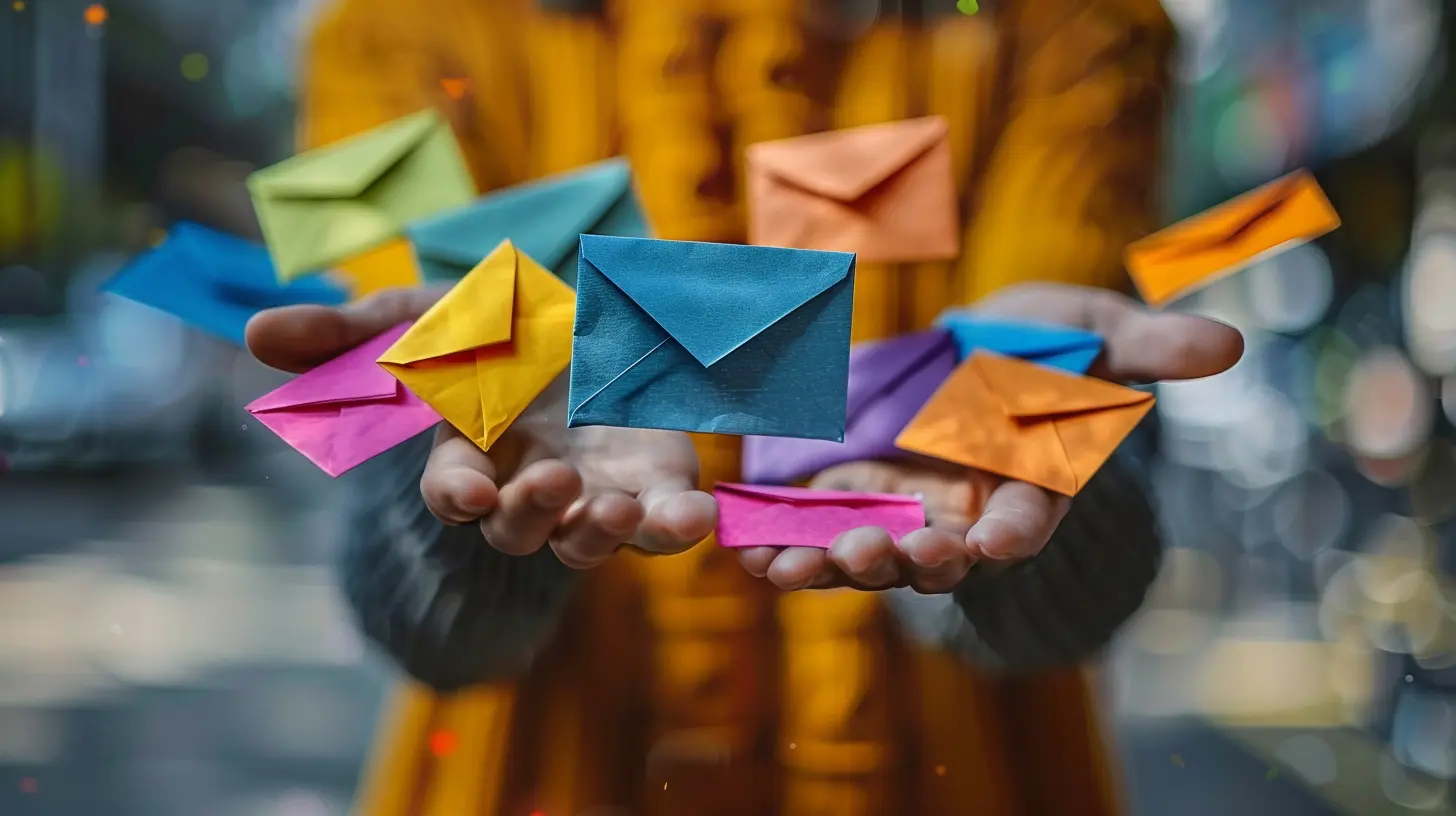The Power of Storytelling in Your Email Marketing
21 October 2025
Let’s face it—your inbox is a battlefield. Every day, dozens of emails compete for attention. Promotions, newsletters, updates, oh my! So, how do you make your email stand out in the chaos? One word: storytelling.
Yep, storytelling isn’t just for bedtime or blockbuster movies. It’s a superpower in the world of email marketing, capable of transforming bland messages into magnetic content that your subscribers actually want to read.
Stick around, because we’re about to dive deep into why storytelling is your email’s secret weapon and how you can wield it like a pro.
Why Storytelling Works (Even in Email Marketing)
Let me hit you with a truth bomb—people don’t buy products or services; they buy stories. Stories stir emotion, spark curiosity, and build connections. You can give someone a list of product specs and benefits, but if it doesn’t move them, it won’t convert.Here’s the cool part: our brains are literally wired for storytelling.
Studies show that a well-told story activates more areas of the brain than a straight-up information dump. It triggers sensory and emotional reactions—making your message more memorable and impactful.
In short? Stories stick. Facts fade.
From Inbox to Impact: The Role of Storytelling in Emails
So, how does storytelling actually come into play in email marketing?1. Grabbing Attention From the Get-Go
The subject line is your first impression. A story teaser has way more “open-me” power than a generic line like "Our Monthly Newsletter Is Here." Imagine seeing this in your inbox:👉 “What a lost suitcase taught me about customer service”
Boom. Instantly intriguing, right?
2. Building Trust and Emotional Connection
People trust people—not faceless companies. By telling authentic stories, you humanize your brand. Whether it's a personal anecdote, a customer success tale, or a behind-the-scenes moment, a good story builds rapport.And trust? That’s the currency of conversions.
3. Guiding the Reader Through a Journey
A well-structured story has a beginning (the hook), a middle (the struggle or problem), and an end (resolution). This narrative arc naturally guides readers through your email, keeping them hooked. It’s storytelling 101—but with a call-to-action at the end.4. Making Complex Ideas Simple
Ever tried to explain a complicated product or service and saw your reader’s eyes glaze over (even through the screen)? Stories simplify. Instead of talking features, show your product in action through a use-case or client experience.
Elements of a Compelling Email Story
Ready to start storytelling in your emails? Great. Let’s talk ingredients. A compelling email story usually has these tasty bits:A Relatable Character
Could be you, a team member, a customer, or even a fictional persona. The key here is relatability. Readers need to see themselves in your story.A Struggle or Conflict
No story thrives on sunshine and rainbows alone. Show a challenge, pain point, or conflict. This creates tension and stakes—and makes the resolution that much sweeter.A Turning Point
What changed? What was the “aha!” moment? This is the bridge between the problem and the solution.A Resolution (Your Offer)
Wrap it up with how the problem was solved—with your product, service, or a fresh insight. This is where your pitch lives, but it should feel like a natural part of the story.
How to Use Storytelling in Different Email Types
The beauty of storytelling is its flexibility. You don’t need to write a novel; even short stories pack a punch. Here’s how storytelling fits into several common email types:✉️ Welcome Emails
Introduce your brand with a personal origin story. What inspired you to start the company? What values drive your team? Invite your new subscriber into your world, not just your mailing list.> “Hey Sarah, five years ago I was sitting in my cramped apartment, frustrated with how impossible it was to find eco-friendly home products on a budget. That’s when the idea hit me…”
✉️ Product Launch Emails
Rather than just shouting “New Product Alert,” tell a story about the problem it solves.> “Last winter, I noticed my hands getting painfully dry no matter what lotion I used. So, we created a balm that locks in moisture without that greasy feel…”
✉️ Case Study or Testimonial Emails
Turn your customer success stories into mini-narratives. Show how your product transformed their lives, and let their voice shine through.> “Meet Tom. He used to spend hours wrangling spreadsheets. Now, he automates 90% of his workflow and spends more time coaching his team…”
✉️ Cart Abandonment Emails
Add a bit of drama or humor to re-engage.> “We noticed you left that perfect leather wallet in your cart. Maybe you got distracted? Or maybe your cat walked across the keyboard. Either way, it’s still waiting…”
✉️ Newsletter Emails
Instead of a list of updates, why not a mini-story with a takeaway?> “This month, we learned the hard way that automated emails can go rogue. Here's what happened, and what you can learn from our mistake…”
Storytelling Techniques That Actually Work
You don’t need to be Hemingway. You just need to think like a human.Here are some foolproof techniques to punch up your storytelling game:
🧠 Start In the Middle of the Action
Instead of boring intros, drop readers into the action. “I was five minutes from presenting to the board when the power went out…”🪞 Use Sensory Details
The more vivid, the better. Think sounds, smells, colors, and feelings. Want to bring your story to life? Make the reader see and feel it.🗣️ Use Dialogue
Dialogue adds personality. Even a single quote can make your story pop. “I never thought I’d say this,” she said, “but I actually enjoy budgeting now.”🙋 Ask Questions
Questions are like mental speed bumps—they slow the reader down and get them thinking. “Ever felt like your to-do list is never-ending?”🎯 End with a Clear CTA
Every good story has a point. Wrap it up neatly and nudge your reader to take action—sign up, click through, buy, reply.Common Mistakes to Avoid
Even the best intentions can go south. Here are a few traps to steer clear of:- Getting too long-winded: This isn’t your college essay. Keep your story tight.
- Forgetting the point: There’s gotta be a reason you're telling the story. Tie it back to your CTA.
- Being too salesy: A story isn't a sales pitch disguised with fluff. Aim for connection first, conversion second.
- Skipping the structure: Remember that arc—beginning, middle, end. Without it, you’re just rambling.
Real-World Brands Crushing It With Storytelling
You don’t need to reinvent the wheel. Some brands are already doing storytelling right:- Airbnb: Their emails often feature real guest stories and experiences.
- Charity:Water: Uses compelling narratives of individuals impacted by donations.
- Glossier: Mixes customer stories and founder anecdotes to create brand intimacy.
How to Get Started Today
You might be thinking, “This sounds great, but where do I even begin?” Here’s a quick-start action plan:1. Brainstorm a List of Stories
- First customer
- A major mistake (and what you learned)
- Behind-the-scenes moments
- Personal turning points
- Funny or unexpected challenges
2. Match Story Types to Email Goals
- New lead? Tell your origin story.
- Product launch? Tell a problem-solving story.
- Sale reminder? A light-hearted anecdote gets attention.
3. Write a Rough Draft Without Overthinking
Don’t aim for perfection. Just write as if you’re telling a friend.
4. Edit for Clarity and Brevity
Trim the fluff. Make every word earn its place.
5. Add a Clear CTA
What’s the next step? Say it, boldly.
Final Thoughts
Email marketing doesn’t have to be boring, robotic, or overly pushy. When you use storytelling, you transform your emails into something people actually look forward to reading. You build connections. You create trust. And yes—eventually, you boost conversions.So next time you sit down to write an email, don’t start with what you want to sell. Start with a story your audience wants to hear.
Pull them in. Keep them hooked. Make them care.
Because in the inbox jungle, stories are your secret weapon.
all images in this post were generated using AI tools
Category:
Email MarketingAuthor:

Rosa Gilbert
Discussion
rate this article
1 comments
Octavia Cook
Compelling storytelling in email marketing captivates audiences, builds brand loyalty, and enhances engagement, transforming routine messages into memorable experiences.
October 27, 2025 at 3:59 AM


